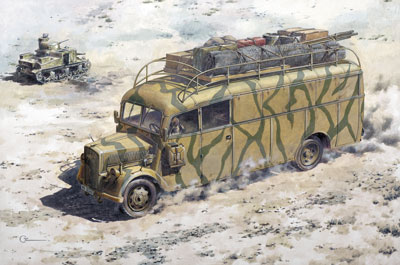
- aviationmegastore.com
- aviationoutletstore.com
- Ship to United States
Quick Search
Aviation Shop
categoriesPublic holidays
Amended or confirmed operating hours of the Luchtvaart Hobby Shop in Aalsmeerderbrug on the following dates:
Aviation Megastore website is available without limitations. Orders are processed during shop operating hours.
| Sa | 27 Apr. | Closed: King's Day |
| Th | 9 May | Closed: Ascension Day |
| Mo | 20 May | Closed: Whit Monday |
Frequent buyers programme
Collect Megapoints for Megavouchers
Read the conditions...
Hold & Store service ©
Aviation Megastore offers unique Hold & Store service © for internet customers that wish to combine several individual orders to one single shipment, reducing the overall shipping cost significantly.
Read more...
Opel 3,6-47 Omnibus Stabwagen
Product code 723
€ 14.01
Scale 1 : 72
Publisher/Brand Roden
Category Scale Modelling
Subcategory Scale Modelling » Kits: Ground Equipment/Vehicles
Availability only 1 remaining
This product was added to our database on Friday 8 June 2012.
Your reliable Aircraft Modelling Source since 1989
Mind: this is a modelling kit.
Product description
In 1939 Germany was rapidly preparing for global hostilities. The plans of the German command supposed an instantaneous capture of quite large areas of other countries, and therefore special attention was paid to the question of the greatest possible motorization of infantry units. Besides a large number of different types of trucks which were already in the Wehrmacht's inventory, staff buses also began to be taken on charge, whose main task was the conveyance of officers during offensive actions of the army with a likely prospect of minimal resistance by an opposing party in the conflict.
The practice of building buses on a truck's chassis had existed for a long time, and therefore the most common types of buses which came into the German's inventory were based on the most widely used trucks. One of the most popular trucks at this time was the well-known Opel Blitz, and on its chassis was designed a standard army bus (at the time the more common term for it was "omnibus").
The Ludewig firm which was engaged in designing the bus, was located in Essen and had great experience in the manufacture of civilian multiseat vehicles. The standard chassis of the three ton truck was extended a little bit (up to 4450 mm), and the frame structure was reinforced. The original all-metal body of the new bus was quite elegant in outline, and only the front part where the engine was hidden, and the classic radiator with its distinctive logo, immediately reminded one of its predecessor, the famous "Blitz". Inside the cabin were several rows of seats which could be easily demounted if necessary (transportation of bulk goods, medical equipment, etc.).
Series production of the bus, officially designated the Opel 3.6-47 type W39, started in the second half of 1939, almost at the same time as the invasion of Poland by Germany and the start of WWII. At first, the number of vehicles produced per month was very small, but already in 1940 about one hundred units per month off were coming off the production line in Essen. Series production lasted until mid-1943, when the situation became worse for Germany at the Front, basic industrial materials were in short supply, and as a result, Ludewig had to seriously simplify the structure of the bus. During this period 2,880 units of the early version were produced overall, which were sent both to the Eastern Front in Russia, and to the Afrika Corps of General Rommel in North Africa.
A small number of early production buses were converted into mobile staff vehicles. For this purpose almost all of the passenger seats were removed and a few tables were fitted, for meetings in field conditions.
In addition, staff vehicles were equipped with various pieces of special equipment like telegraph machines, radios, 'Enigma' encryption machines, etc. A baggage rack of increased capacity was installed on top of the bus due to the need to transport large quantities of staff items. Buses sent to Rommel's Afrika Corps additionally had extra metal shields on the side windows to shield the interior from the intense sunlight in hot desert conditions.
Staff vehicles were used in all theaters of war and played a full and definite role in active combat, especially in the early years of WWII
- aviationshopsupplies.com
- aviationmegatrade.com
© 1989–2024 Luchtvaart Hobby Shop B.V.
